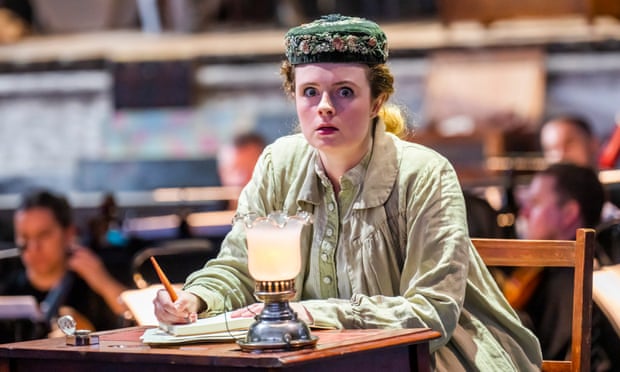“The Greta Gerwig Little Women was perfection, although I don’t understand why they missed out the lime scene.”
“Maya Hawke in the PBS series is my favourite Jo.”
“Timothée Chalamet is a great actor but he’s not the Laurie I imagined.”
Such disparate views from my peers and colleagues have buzzed around my mind while preparing to direct the UK premiere of Mark Adamo’s opera Little Women. Opera directors often view Carmen and Don Giovanni as poisoned chalices: they are so well known that everyone has an opinion about how they should be staged. But Little Women is in an altogether different league. This is a story that almost everyone, not just opera lovers, has grown up with, whether through the pages of Louisa May Alcott’s book, through the episodes of a miniseries, or via a star-studded Hollywood blockbuster. The March sisters have been companions to many of us at different stages of our lives; fictional figures who we measure ourselves against when struggling with the weight of personal choices. Not only do we see the best and worst of ourselves in the sisters, but we also use their stories to better understand our own lives and relationships. Yes, they are several generations distant from us, but the growing pains they go through and the decisions they face encompass themes that are with us still.
It is no surprise that Alcott’s Little Women features in Time magazine’s 100 Best YA Books of All Time and the Guardian’s The 100 Best Novels Written in English. Our deep-rooted affection for the book is largely drawn from Alcott’s ability to make each reader identify with one sister more than another, and to view others around them as being a Jo, a Meg, an Amy or a Beth. Most people have strong opinions about what the March sisters should be like in terms of their personalities and looks.
So where do you start when you are directing a production of Little Women? And what do you do when there are not one but two authors involved, as well as a director who likes to reshape and retell works for her audience?
I often wonder why Little Women holds a place in our hearts and why we identify deeply with its women who are worlds apart from us. The point that designer Madeleine Boyd and I kept coming back to was that they embody the universal pains and triumphs of growing up. Adamo said that when his sister married he felt the same sense of loss that Jo feels when Meg marries. And our entire rehearsal room was reduced to tears when one of our cast shared the experience of losing her sister when she was 25 years old, identifying moments paralleled by Jo and Beth when Little Women takes us into a similar moment of bereavement. I also see aspects of my personal flaws portrayed in the different sisters, and I understand better how to deal with those flaws by having a mirror held up to me; by questions being posed.
Adamo’s 1998 score and libretto reshape Alcott’s novel in several ways. The full name of Aunt March is Josephine March – the name also given to the story’s heroine. While using musical representation to symbolise closeness between Jo and her aunt, Adamo gave the women discrete names, restyling Aunt March as Aunt Cecelia. Similarly, the girls’ father receives the name Gideon, chosen by Adamo as suitably churchy, and parts of the story are recontextualised, time and space distorted to chart the love between the sisters and frame Jo’s journey in recognising that change is an inevitable part of life.
For our new production, we decided to make one key change to the narrative structure and placed on stage the four offstage voices that Adamo added to his opera. Our Little Women are not just young people growing up in 1860s Concord but everywomen who endure in us all, irrespective of time. And as Alcott’s March sisters talk to us across ages and realms, it is ever more important for us to recognise and celebrate our fundamental rights as women to make our own choices, especially now when even something as elemental as control over our bodies is at risk.

